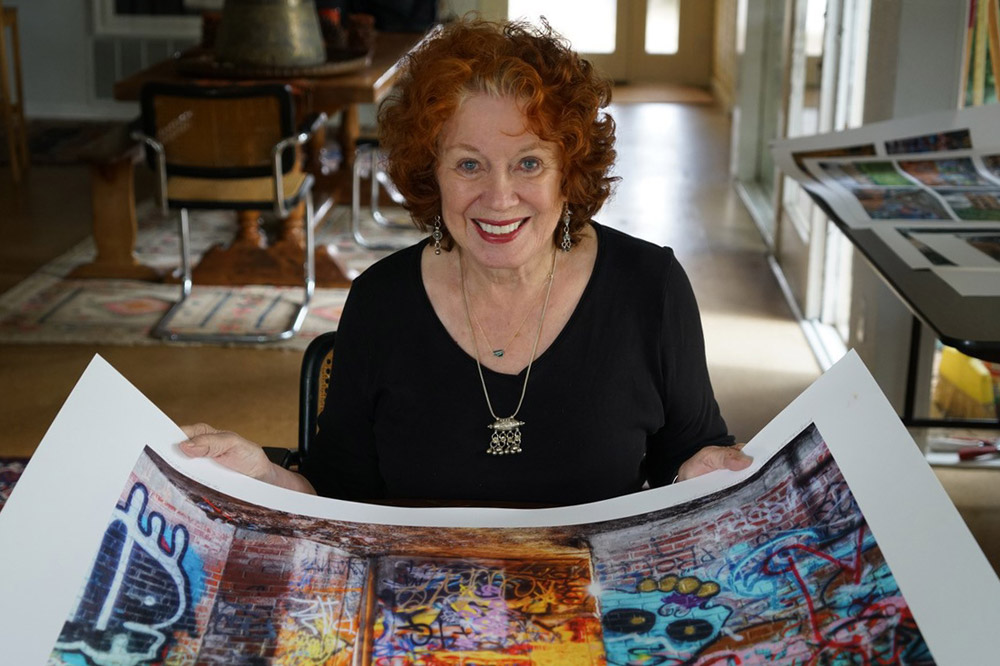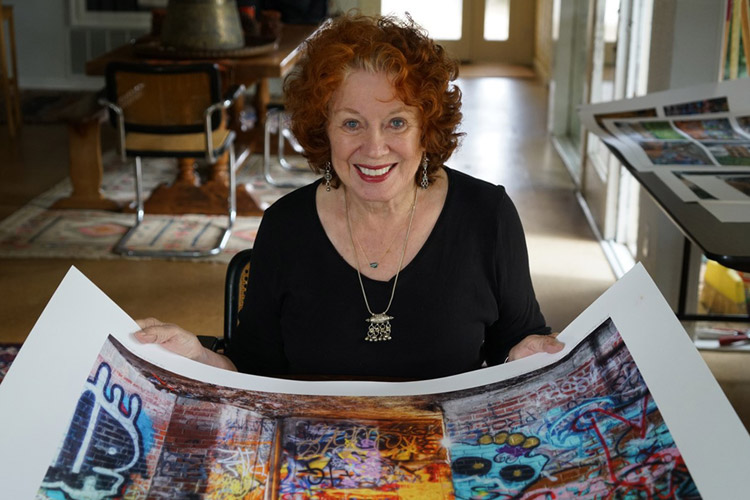
After 50 years of capturing the beauty of important cultural spaces around the world, photographer Carolyn Brown has committed to leave her entire life’s work to the Edith O’Donnell Institute of Art History at The University of Texas at Dallas. The collection includes thousands of images of the Middle East, Mexico, the Southwest and Dallas.
In 1969 Carolyn Brown departed Chicago on the first flight of her life to Egypt to study Islamic art and architecture at The American University in Cairo. Her experience over the next three years began a career in photography that would take her across the Middle East, Mexico and the southwestern U.S. Her archives include thousands of print and digital images from 14 countries, including 24 Mexican states, as well as locations across Texas and the city of Dallas.
“Collections like Carolyn’s mean the world to a place like UT Dallas,” said Dr. Michael Thomas, director of the O’Donnell Institute and Richard R. Brettell Distinguished University Chair. “Having meaningful art on campus opens up visual storybooks that engage audiences and bring them to our University. It brings individuals together to tell stories about people, cultures and history that you otherwise don’t have.”

Born in Colorado, Brown fell in love with art at a young age. She originally worked in ceramics and sculpture before teaching art at the junior high and high school levels. During her time in Egypt, she found herself captivated by her surroundings — from bustling streets to endless desert landscapes strewn with timeless monuments. She purchased her first camera while there to capture what she saw, thus launching an obsession that later evolved into a professional career.
Because of her background in the studio arts, Brown said she contemplates the spaces she photographs with an eye toward their design elements. She thinks in terms of lines, light, colors and the division of space. This helps her capture the unique aesthetic qualities of her subjects, which include archaeological sites, culturally important architecture and the everyday life of human beings.
“My work is fairly traditional,” Brown said. “I like to document something as it is and show it in its most beautiful aspect.”
However traditional her composition, what Brown captures in her photography are fleeting moments that can be relived in the future. Much of her work depicts locations that are difficult to access today or have been lost to the erosion of time and human conflict.
“Today it is practically impossible to travel to some of the places I’ve been, like Yemen, Iraq, Syria and Lebanon,” Brown said. “But these photographs will always be there to look at and learn from. This material is a document that shows these places at their best.”
Even for those subjects still existing and accessible today, Brown views the art of photography as a way to transport oneself in time and memory.
“Collections like Carolyn’s mean the world to a place like UT Dallas. Having meaningful art on campus opens up visual storybooks that engage audiences and bring them to our University. It brings individuals together to tell stories about people, cultures and history that you otherwise don’t have.”
Dr. Michael Thomas, director of the Edith O’Donnell Institute of Art History and Richard R. Brettell Distinguished University Chair
“The beauty of photography is that by looking at it, one can immediately experience long-ago moments, never to be forgotten. The places and people I photograph will always be remembered exactly as they were on the day the shutter was snapped,” Brown said.
UT Dallas is the perfect home for such artwork, Thomas said.
“Documenting and preserving cultural heritage is a central idea for the O’Donnell Institute,” he said. “Carolyn’s photographs are truly some of the last great documents of these places. They are beautiful photographs of artwork and architecture that constitute our cultural heritage.”
Brown’s relationship with UT Dallas began when she met Dr. Richard Brettell, founding director of the O’Donnell Institute. During the years before Brettell came to UT Dallas, he and Brown collaborated on several exhibitions, including a showing of Brown’s Egyptian work at the Dallas Museum of Art and an exposition at Fair Park’s Hall of State titled “Sacred Space: Man and the Divine in Mexico, Central America and Southwestern United States.” When Brettell approached her to consider leaving her work to UT Dallas, Brown agreed.
“Once I could work with Rick right here in Dallas, that was the best thing,” Brown said. “I feel very fortunate to know that my work will go on to help educate people about these places I’ve been.”
Selections from Brown’s archive documenting the ancient city of Palmyra in Syria will be on display at the Crow Museum of Asian Art of The University of Texas at Dallas in October.
